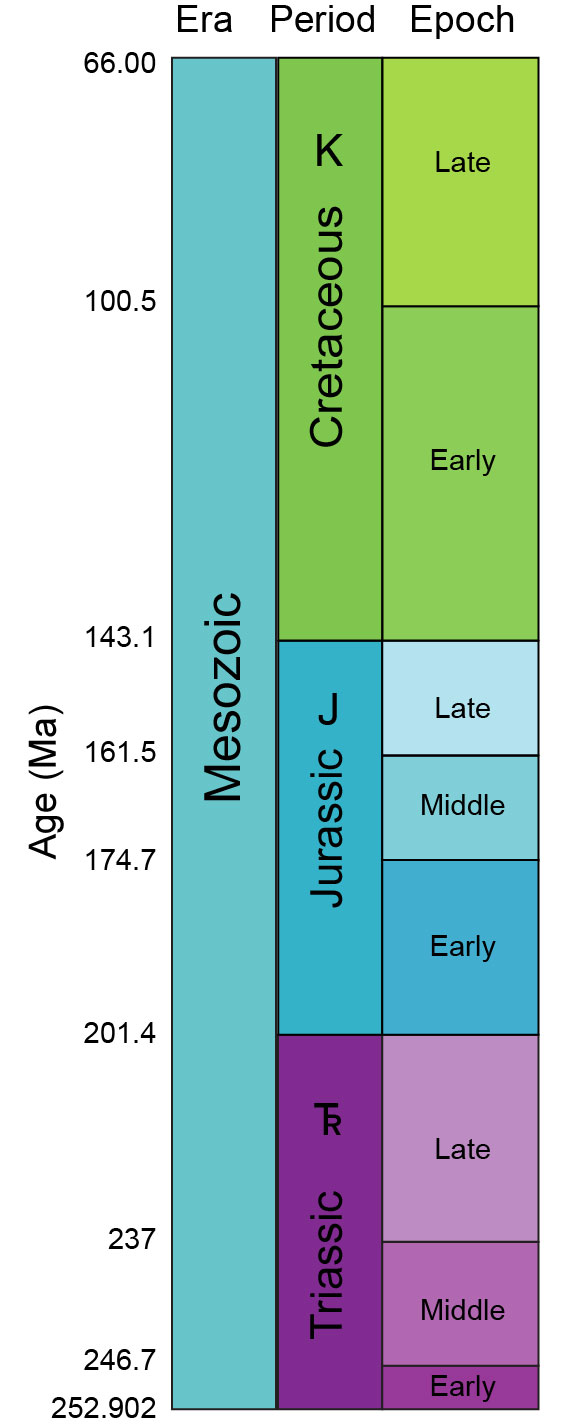


Phanerozoic Eon: 542 - 0 Ma
| Period | Range (Ma) |
|---|---|
| Cretaceous | 145.5 - 65.5 |
| Jurassic | 199.6 - 145.5 |
| Triassic | 252.3 - 201.5 |
(Triassic boundary dates new as of 2010: previous calculations were 251.0 and 199.6 Ma).
Paleogeography and Geology of the
Triassic:
The Sonoman Orogeny is still
underway (collision of Sonomia and western North America).
Abundant redbeds in many parts of the world.(New Red Sandstone in Britain; Karoo Supergroup (actually a Permo-Jurassic unit) in southern Africa; Moenkopi through Chinle Formation in southwestern U.S., etc.). Once thought to indicate worldwide dry conditions, but now seen as product of a couple of other factors:
Collision of North and South China blocks with Siberian coast completes Pangaea.
Appalachians and other mid-Pangaean mountains worn down until low ridge.
During latest Triassic: rifting in mid-Pangaea (between North America + Europe and Africa).
Paleogeography and Geology of the
Jurassic:
Continued rifting and volcanism along Central Atlantic margin (including the
Palisades of New York, New Jersey, and southern New England); the Newark
Supergroup development continues. Extensive evaporite deposits.
Continued evidence of arid conditions in many parts of the world during the Early Jurassic (Glen Canyon Group of American Southwest, etc.).
During Middle Jurassic, major global transgressions and return to calcite sea conditions. Europe flooded, development of European Archipelago.
As Atlantic grows:
In Middle-Late Jurassic, development of ongoing "Andean"-style subduction along Pacific coastline of North America. Foreland periodically flooded and emergent.
During Late Jurassic, Nevadan Orogeny:
To Next Lecture.
To Previous Lecture.
To Syllabus.